
Render-blocking sources are a vital a part of optimizing the infrastructure of your webpage.
Decreasing them may also help make your web page load a lot quicker and considerably enhance your web page’s Core Internet Vitals.
These render-blocking sources embody issues like exterior fonts that take too lengthy to load (that don’t must be used), pointless media recordsdata, code bloat that simply received’t go away, and extra plug-ins that aren’t crucial.
There’s a myriad of a lot of these sources you could compress and mix to create single recordsdata that obtain quicker in your gadgets, making a a lot quicker web page velocity.
By optimizing your web page construction on this matter, you may scale back the quantity of labor that Google has to do to crawl your web site, and you’ll enhance your person expertise because of this.
The truth is, the complete advantages of doing this course of embody:
- Sooner web page velocity.
- Fewer sources required by Google to load your web page.
- Discount in points attributable to code bloat.
- Smaller general file dimension of your DOM (doc object mannequin).
- Fewer JavaScript and CSS recordsdata to obtain.
- Higher and quicker deployment throughout a spread of platforms and gadgets.
- Improved person interplay on cell.
- Improved efficiency general.
Clearly, there are great advantages to performing such a optimization course of in your web site.
Why Ought to You Establish Render-Blocking Assets?
Figuring out and lowering sources liable for blocking the rendering of your webpage is a vital optimization level that may make or break your web page velocity.
It may be so vital that it may possibly pay dividends to your web site’s web page expertise metrics (and your person’s satisfaction) because of this.
In 2021, the common time it took to completely render a cell webpage was 22 seconds. In 2018, it was 15 seconds.
Clearly, this can be a considerably higher quantity than Google’s advisable time of two to 3 seconds. It’s additionally considerably higher than it was.
What might be inflicting these points with render-blocking sources?
What’s driving this enhance in general web page render velocity?
One fascinating development to notice is that there was an growing reliance on third-party fonts in comparison with system fonts. Utilizing third-party fonts as a useful resource tends to intrude with the processing and rendering of a web page.
With system fonts, the browser doesn’t should load something additional, so it doesn’t have that further processing step because of this.
Screenshot from Internet Almanac, November 2022
This reliance throughout industries is more likely to impression this rendering time. After all, this isn’t the one reason for this problem with render-blocking sources.
As well as, Google’s personal providers are inclined to have a big impression on rendering time, corresponding to Google Analytics or utilizing a third-party Fb pixel for monitoring functions.
The will to depend on such applied sciences is just not essentially horrible from a advertising and marketing perspective.
However from a render-blocking sources perspective, it may possibly trigger important will increase in web page load time and the way Google (and customers) understand your web page.
The perfect answer is to make sure your web page masses for person interplay as rapidly as potential.
It’s additionally a chance that poor net improvement practices in use by net builders immediately are in charge.
Both approach, that is one thing in each website undertaking that must be addressed as a part of your Core Internet Vitals audits.
Web page expertise, nonetheless, is not only about how briskly the complete web page masses.
As a substitute, it’s extra concerning the general expertise of the web page as measured by Google’s web page expertise framework or Core Internet Vitals.
This is the reason you wish to work on bettering and optimizing your web page velocity for the vital rendering path all through the DOM or doc object mannequin.
What Is The Crucial Rendering Path?
The vital rendering path refers to the entire steps that it takes to render the complete web page, from when the browser first begins receiving knowledge to when it lastly compiles the web page on the closing render.
It is a course of that may take solely a number of milliseconds should you optimize it proper.
Optimizing for the vital rendering path means ensuring that you just optimize for the efficiency of rendering on many various gadgets.
That is completed by optimizing the vital rendering path to get to your first paint as rapidly as potential.
Principally, you’re lowering the quantity of time customers spend a clean white display screen to show visible content material ASAP (see 0.0s beneath).
 Screenshot from net.dev, November 2022
Screenshot from net.dev, November 2022
There’s a complete course of on how to do that, outlined in Google’s developer information documentation, however I will likely be specializing in one heavy hitter particularly: lowering render-blocking sources.
How Does The Crucial Rendering Path Work?
The vital rendering path refers back to the sequence of steps a browser takes on its journey to render a web page by changing the HTML, CSS, and JavaScript to precise pixels on the display screen.
 Screenshot from Medium, November 2022
Screenshot from Medium, November 2022
Primarily, the browser must request, obtain, and parse all HTML and CSS recordsdata (plus some further work) earlier than it’ll begin to render any visible content material.
This course of happens inside a fraction of a second (generally). Customers will see a clean white web page till the browser completes these steps.
The next is an instance of how customers could expertise how a web page masses in line with the totally different phases of the web page load course of:
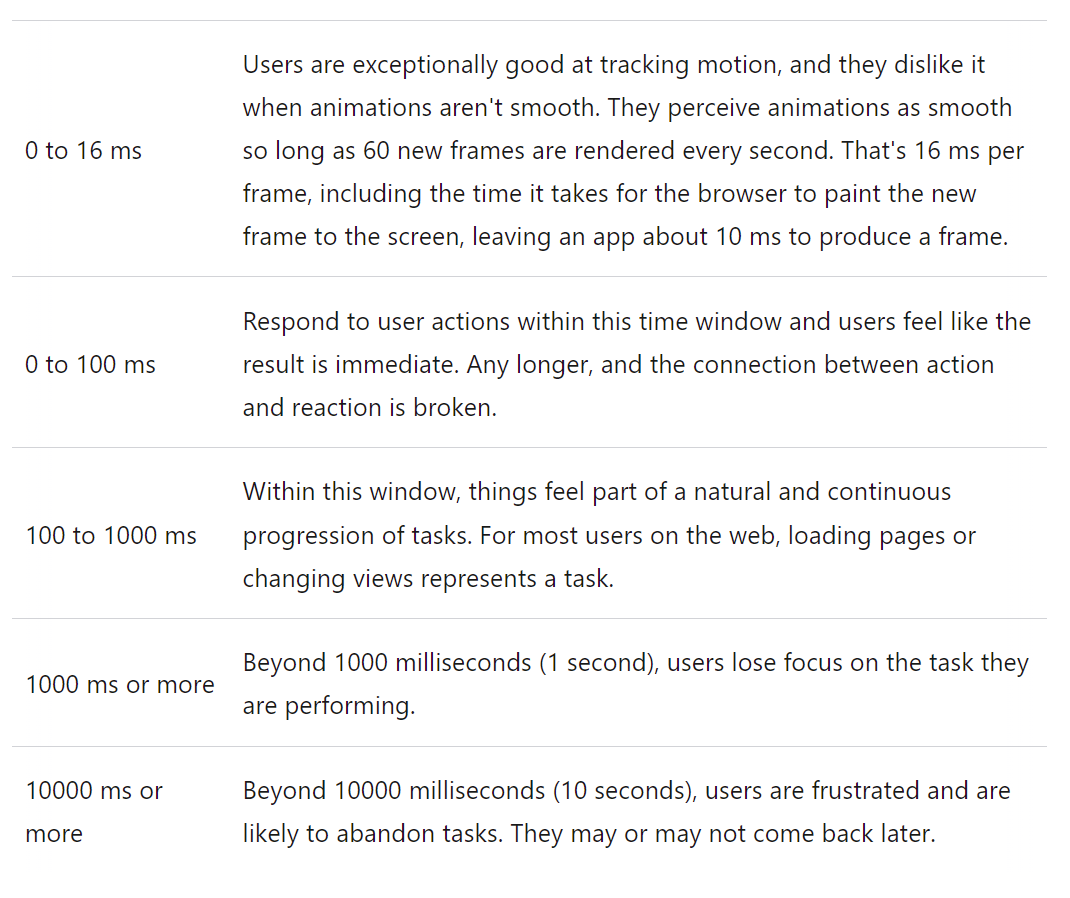 Screenshot from net.dev, November 2022
Screenshot from net.dev, November 2022
Enhancing the vital rendering path can thus enhance the general web page expertise, which may also help enhance efficiency on Core Internet Vitals metrics.
How Do I Optimize The Crucial Rendering Path?
To enhance the vital rendering path, you have to analyze your render-blocking sources.
Any render-blocking sources could find yourself blocking the preliminary rendering of the web page and negatively impression your Core Internet Vitals scores because of this.
This includes an optimization technique of:
- Decreasing the variety of sources which might be vital to the rendering path. This may be executed by utilizing a defer technique for any potential render-blocking sources.
- Prioritizing content material that’s above-the-fold, and downloading essential media property as early as you probably can.
- Compress the file dimension of any remaining vital sources.
By doing this, it’s potential to enhance each Core Internet Vitals and the way your web page bodily renders to the person.
Earlier than discussing optimization strategies you need to use to optimize the vital rendering path, it’s essential to debate the preliminary browser loading course of and why the vital rendering path is so essential.
And this course of includes:
- Preloading web page components.
- Inlining vital types.
- Deferring the loading of JavaScript recordsdata.
- Early hints.
Preloading Web page Parts
First, when the web page is fetched by the browser from the server, the browser will initially scan and discover all web page components to be downloaded. By default, this occurs in a course of the place the browser downloads all components concurrently.
However what occurs when you have got many web page components to obtain (corresponding to what continuously occurs with a WordPress website?) Nicely, this will lavatory down server sources, which additional will increase the web page load time.
How do you get round this? By utilizing the preload hyperlink to asynchronously obtain vital recordsdata which might be blocking the rendering of the web page (mentioned afterward on this article).
Preloading components is a method that helps remove render-blocking type sheets as a result of it masses vital recordsdata wanted for the primary paint stage of the method earlier than loading the entire different recordsdata.
You may preload CSS, JS, Fonts, or Photos. Listed here are examples of learn how to preload them:
JavaScript Preloading
CSS Preloading
Fonts Preloading
Photos Preload
This helps velocity up the method of the web page. Nonetheless, this isn’t a great technique.
The perfect technique is to optimize the positioning to solely use two to 3 plugins, possibly two to 3 different recordsdata, and maintain issues at their naked minimal for the complete web page rendering.
Sadly, this isn’t a sensible endeavor to pursue.
As a result of WordPress websites do are inclined to have many plugins and sources that builders simply aren’t prepared to (or wish to) take care of, the simplest path to success is to work on ensuring that these sources are correctly optimized by utilizing sure plugins.
Inlining Crucial Types
Crucial CSS is a method that extracts the CSS for above-the-fold content material to render content material to the person as quick as potential.
On the minimal, this normally requires:
- Any font declarations.
- Any layout-specific CSS.
- All CSS type guidelines for the above-the-fold DOM (doc object mannequin) components.
Utilizing our earlier instance of the web page loading all sources concurrently, inlining vital types contain utilizing code inside the HTML
tag itself.When you examine, for instance, google.com supply code, you will note it inlined vital CSS into the
part of the HTML.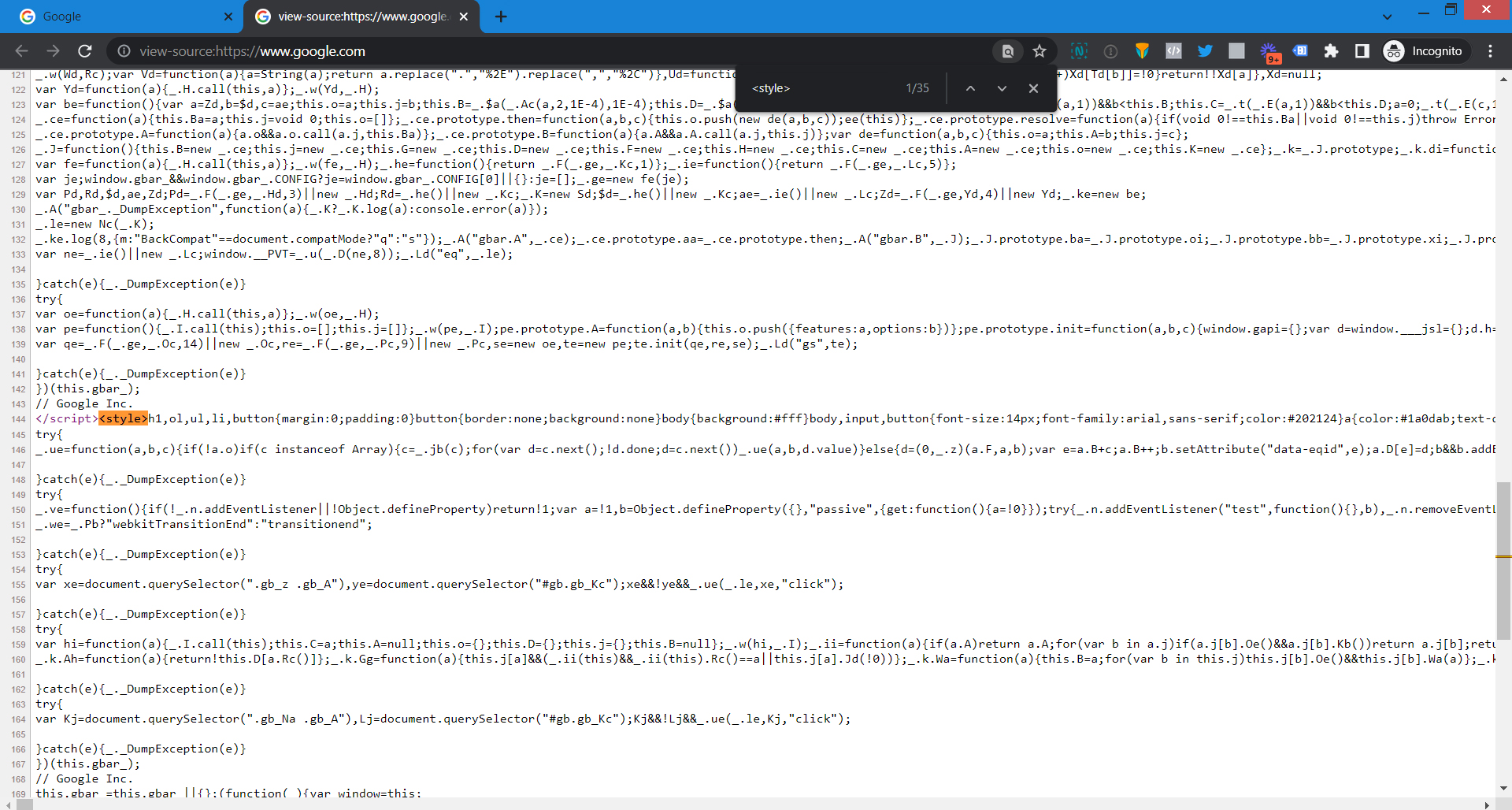 Screenshot from Google.com supply code, November 2022
Screenshot from Google.com supply code, November 2022
There are a number of instruments that may assist to extract vital CSS.
Deferring The Loading Of JavaScript Information
By utilizing this technique, it’s potential to defer the loading of JavaScript recordsdata till after different vital components of the DOM tree are loaded. Nonetheless, this comes with a number of caveats.
Instance of learn how to defer JavaScript file:
Primary is you could negatively impression the positioning’s look when deferring the loading of JavaScript recordsdata as a result of a few of these might be required components for the web page to load utterly.
Quantity two is, should you’re not cautious, by deferring the loading of JavaScript recordsdata, you might doubtlessly introduce points with the web page’s interactivity (interplay to subsequent paint Core Internet Vitals metric).
Quantity three is you could additionally introduce issues with how the positioning works general.
The concept is that you must watch out if you’re engaged on a lot of these optimizations, so that you don’t inadvertently trigger points elsewhere within the course of.
By doing so, you may vastly impression your web page velocity and the way Google sees your web site.
The opposite concern, nonetheless, is if you use plugins corresponding to Nitro to defer vital recordsdata like CSS and JavaScript.
Whereas this will have a optimistic impression on web page velocity, the key problem with that is that the plugin defers all CRITICAL recordsdata till after the web page has loaded the HTML portion of the doc.
What does this imply? Which means Google can not see the complete doc as it’s supposed to show. That is just like blocking your CSS recordsdata and JavaScript recordsdata utilizing robots.txt, which Google does want to find out whether or not your web site is mobile-friendly.
The official Google Developer web page says this, as talked about elsewhere:
“For optimum rendering and indexing, all the time enable Googlebot entry to the JavaScript, CSS, and picture recordsdata utilized by your website in order that Googlebot can see your web site like a median person.
In case your web site’s robots.txt file disallows crawling of those property, it straight harms how nicely our algorithms render and index your content material. This can lead to suboptimal rankings.”
If you’re deferring vital CSS and JavaScript recordsdata for search engine marketing causes, as long as you make sure that Google can see these recordsdata on web page load, you shouldn’t run into any main points with how Google can see your web site.
Utilizing Early Hints For Higher Server Optimization
Earlier than we are able to discuss early hints, we have to talk about the method of how the server masses a webpage. Websites have certainly turn out to be extra subtle lately.
And thus, so have servers. However, there are limitations. Though servers can and do carry out trivial duties all day lengthy, it’s nonetheless potential for a server to turn out to be slowed down by working to overthink the way it handles a web site’s sources.
So, when this occurs, further latency than in any other case could be skilled happens – and this occurs earlier than the browser can begin rendering the web page.
When this latency happens, you may run into conditions the place a web site might take a few seconds earlier than showing within the browser window.
And ensuring your server renders the recordsdata correctly is a superb first step towards growing your web page velocity.
Right here’s an instance of what occurs when your server doesn’t correctly reply and takes too lengthy to course of sure sources:
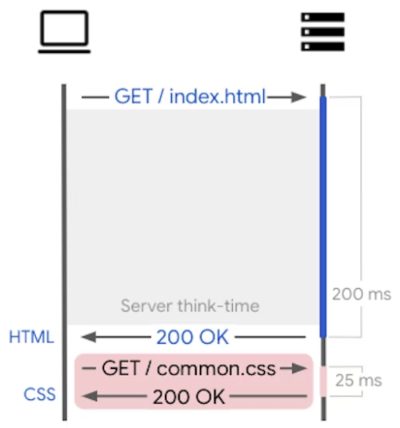 Screenshot from developer.chrome.com, November 2022
Screenshot from developer.chrome.com, November 2022
So, how do early hints work?
In keeping with the Google Chrome Developer information, “early hints are an HTTP standing code (103 Early Hints) which is used to ship an correct preliminary HTTP response forward of a closing response.”
What does this accomplish?
This lets a server present sure kinds of hints to a browser for sure vital sources (JavaScript recordsdata, CSS type sheets, and extra) which might be more likely to be loaded and utilized by the online web page itself.
This course of occurs within the span of some milliseconds or much less whereas the server works on rendering the primary web page sources.
Early Hints are one thing that “helps a browser alongside” and expedites server considering time by engaged on this loading upfront.
Due to this, this course of helps velocity up web page load time because of this.
Instruments To Assist You Optimize Your Crucial Rendering Path
Are you not a code grasp extraordinaire, and also you’re unable to work with and optimize code, plugins, and issues beneath your website’s hood?
Nicely, by no means worry (an excessive amount of!). There are WordPress plugins obtainable that may assist you just do that.
The next features a record of instruments that you need to use to assist optimize your individual vital rendering path for achievement:
- Crucial CSS Plugin: This helpful device means that you can generate vital CSS that your web site wants. Simply add your URL, click on on generate, and away you go.
- Autoptimize Web page Pace Plugin: This specific plugin is yet one more web page velocity plugin that additionally means that you can defer vital recordsdata. As well as, it helps inject inline CSS into the web page head, defers scripts to the footer, and minifies your HTML recordsdata.
- WP Rocket Web page Pace Plugin: This web page velocity plugin is among the strongest caching plugins. After set up, this specific plugin means that you can benefit from web page caching, GZIP compression, preloading the cache, and browser caching.
- WP-Optimize: It is a WordPress plugin that means that you can do a number of issues to assist higher optimize your web site for quick load occasions. They embody optimizing your database, compressing your pictures, and caching your pages, together with minifying and asynchronizing your CSS and JavaScript recordsdata.
Please word: This writer has no financial bias with any of those instruments.
Why Ought to I Care?
Google’s person habits knowledge stories that the majority customers abandon a sluggish web site after about three seconds.
Along with research that present that lowering web page load time and bettering the web page expertise results in larger person satisfaction, there are additionally a number of main Google updates on the horizon that you’ll want to put together for.
Figuring out and optimizing render-blocking sources will likely be vital to staying on prime of the sport when these updates hit.
Google will likely be implementing web page expertise on the desktop in 2022, starting their rollout of desktop web page expertise in February and ending up in March.
In keeping with Google, the identical three Core Internet Vitals metrics (LCP, FID, and CLS), together with their related thresholds, will now be linked to desktop rating.
Additionally, Google is engaged on a brand-new, probably experimental Core Internet Vitals metric, considering maximum occasion length and whole occasion length.
Their rationalization of those elements they’re contemplating are:
Most occasion length: the interplay latency is the same as the most important single occasion length from any occasion within the interplay group.
Whole occasion length: the interplay latency is the sum of all occasion durations, ignoring any overlap.
With many research linking reductions in web page load occasions to enhancements in precious KPIs (conversions, bounce price, time on web site), bettering web site latency has turn out to be a top-of-mind enterprise objective for a lot of organizations.
search engine marketing professionals are uniquely positioned to information this effort, as our function is usually to bridge the hole between enterprise objectives and net builders’ priorities.
Being able to audit a web site, analyze outcomes, and determine areas for enchancment helps us to work with builders to enhance efficiency and translate outcomes to key stakeholders.
The Targets Of Optimizing Render-Blocking Assets
One of many main objectives of optimizing the vital rendering path is to make it possible for the sources which might be wanted to render that essential, above-the-fold content material are loaded as rapidly as is humanly potential.
Any render-blocking sources have to be deprioritized, and any sources which might be stopping the web page from rendering rapidly.
Every optimization level will contribute to the general enchancment of your web page velocity, web page expertise, and Core Internet Vitals scores.
Why Enhance Render-Blocking CSS?
Google has mentioned many occasions that coding is just not essentially essential for rating.
However, by the identical token, gaining a rating profit from web page velocity optimization enhancements can doubtlessly assist, relying on the question.
In relation to CSS recordsdata, they’re thought-about to be render-blocking sources.
Why is that this?
Though it occurs inside a millisecond or much less (generally), the browser received’t begin to render any web page content material till it may possibly request, obtain, and deal with all CSS types.
If a browser renders content material that’s not styled correctly, all you’ll get is a bunch of bizarre textual content and hyperlinks that aren’t even styled.
Which means your web page will principally be “bare,” for lack of a greater time period.
Eradicating the CSS types will lead to a web page that’s actually unusable.
The vast majority of content material will want repainting to be able to look in the slightest degree palatable for a person.
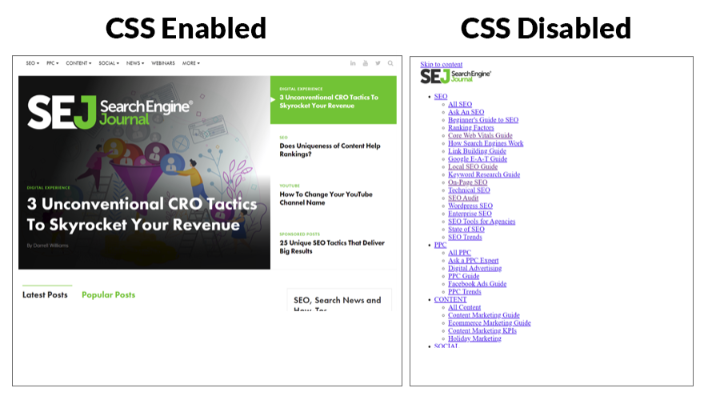
If we look at the web page rendering course of, the grey field beneath represents the browser time wanted to get all CSS sources. This manner, it may possibly start developing the DOM of CSS (or CCSOM tree).
This might take anyplace from a millisecond to a number of seconds, relying on what your server must do to load these sources.
It may well additionally range, which might rely on the scale, together with the amount, of those CSS recordsdata.
The next render tree exhibits an instance of a browser rendering all of the recordsdata together with CSS inside the DOM:
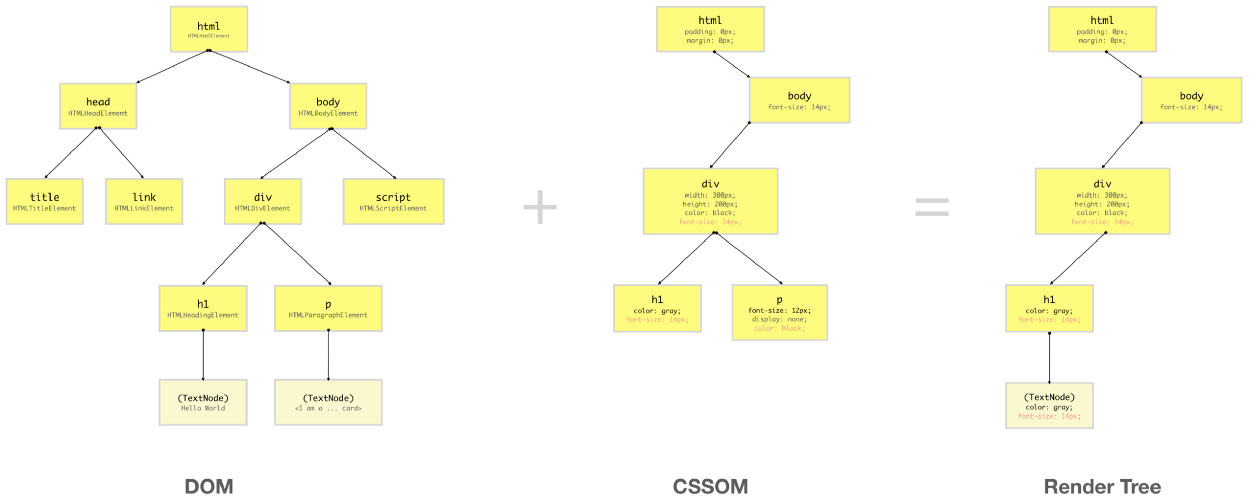 Screenshot from Medium, November 2022
Screenshot from Medium, November 2022
As well as, the next exhibits an instance of the rendering sequence of a web page, during which all of the recordsdata load in a course of, from the development of the DOM to the ultimate portray and compositing of the web page, which is named the vital rendering path.
As a result of CSS is a render-blocking useful resource by default, it is smart to enhance CSS to the purpose the place it doesn’t negatively impression the web page rendering course of.
The official Google advice states the next:
“CSS is a render-blocking useful resource. Get it to the shopper as quickly and as rapidly as potential to optimize the time to first render.”
The HTML have to be transformed into one thing the browser can work with: the DOM. CSS recordsdata are the identical approach. This have to be transformed into the CSSOM.
By optimizing the CSS recordsdata inside the DOM and CSSOM, you may assist lower the time it takes for a browser to render all the things, which vastly contributes to an enhanced web page expertise.
Why Enhance Render-Blocking JavaScript?
Do you know that loading JavaScript is just not all the time required?
With JavaScript, downloading and parsing all JavaScript sources is just not a crucial step for totally rendering a web page.
So, this isn’t actually a technically required a part of web page render.
However the caveat to that is: Most fashionable websites are coded in such a approach that JavaScript (for instance, the Bootstrap JS framework) is required to be able to render the above-the-fold expertise.
But when a browser finds JavaScript recordsdata earlier than the primary render of a web page, the rendering course of might be stopped till later and after JavaScript recordsdata are totally executed.
This may be specified in any other case by deferring JavaScript recordsdata for later use.
One instance of that is if there are JS features like an alert that’s constructed into the HTML. This might cease web page rendering till after the execution of this JavaScript code.
JavaScript has the only real energy to change each HTML and CSS types, so this is smart.
Parsing and execution of JavaScript might be delayed due to the truth that JavaScript can doubtlessly change the complete web page content material. This delay is constructed into the browser by default – for simply such a “simply in case” situation.
Official Google advice:
“JavaScript may block DOM building and delay when the web page is rendered. To ship optimum efficiency … remove any pointless JavaScript from the vital rendering path.”
How To Establish Render-Blocking Assets
To determine the vital rendering path and analyze vital sources:
- Run a check utilizing webpagetest.org and click on on the “waterfall” picture.
- Concentrate on all sources requested and downloaded earlier than the inexperienced “Begin Render” line.
Analyze your waterfall view; search for CSS or JavaScript recordsdata which might be requested earlier than the inexperienced “begin render” line however aren’t vital for loading above-the-fold content material.
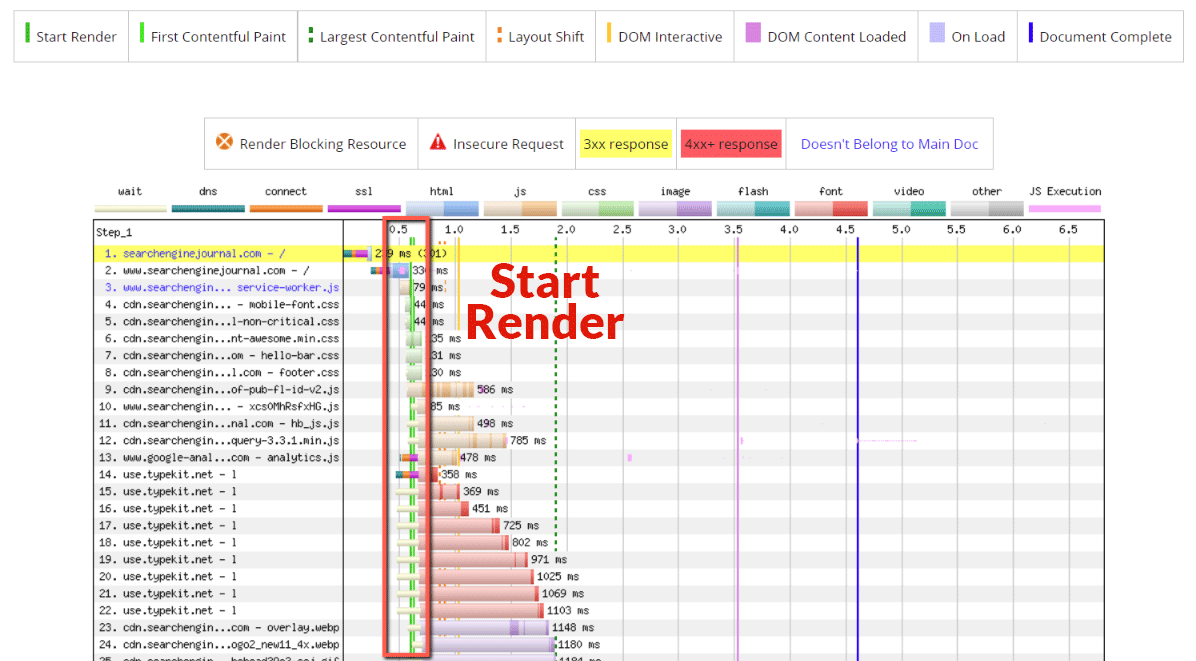 Screenshot from WebPageTest, November 2022
Screenshot from WebPageTest, November 2022
After figuring out a (doubtlessly) render-blocking useful resource, check eradicating it to see if above-the-fold content material is affected.
In my instance, I observed some JavaScript requests that could be vital.
Though they’re vital, it’s generally a good suggestion to check eradicating these scripts to check how shifting components on the positioning have an effect on the expertise.
 Screenshot from WebPageTest, November 2022
Screenshot from WebPageTest, November 2022
There are additionally different methods to enhance such sources.
For non-critical JavaScript recordsdata, you might wish to look into combining the recordsdata and deferring them by together with these recordsdata on the backside of your web page.
For non-critical CSS recordsdata, you can even scale back what number of CSS recordsdata you have got by combining them into one file and compressing them.
Enhancing your coding strategies may lead to a file that’s quicker to obtain and causes much less impression on the rendering velocity of your web page.
How To Scale back Render-Blocking Parts On The Web page
As soon as you establish {that a} render-blocking useful resource is just not vital for rendering content material above the fold, you’ll want to discover a myriad of strategies which might be obtainable to be able to enhance the rendering of your web page and defer non-critical sources.
There are numerous options to this drawback, from deferring JavaScript and CSS recordsdata to lowering the impression that CSS can have.
One potential answer is to not add CSS utilizing the @import rule.
Make Certain Not To Add CSS Utilizing The @Import Rule
From a efficiency perspective, despite the fact that @import seems to maintain your HTML file cleaner, it may possibly truly create points with efficiency.
The @import declaration will truly trigger the browser to course of a CSS file extra slowly. Why? As a result of it is usually downloading the entire imported recordsdata.
Rendering will likely be fully blocked till the method completes.
Certainly, the perfect answer is to make use of the usual technique of together with a CSS stylesheet utilizing the declaration within the HTML.
Minify Your CSS And JavaScript Information
If you’re on WordPress, utilizing a plugin to minify your CSS and JavaScript recordsdata can have an amazing impression.
The method of minification takes the entire pointless areas inside a file and compresses it even additional, so you may find yourself with a pleasant efficiency enhance.
Additionally, even if you’re not on WordPress, you need to use the providers of a well-qualified developer to finish the method manually.
This can take extra time however might be nicely price it.
Minified recordsdata are normally a lot lighter than their former counterparts, which signifies that preliminary rendering will full a lot quicker.
Along with this, after the minification course of, you can even count on the obtain course of to be quicker as a result of much less time is critical to obtain non-render blocking sources.
Use System Fonts As a substitute Of Third-Celebration Fonts
Whereas third-party fonts could seem to make a web site “prettier,” this isn’t precisely the case.
Whereas it might look wonderful on the floor, these third-party font recordsdata typically take an extended time to load and might contribute to your render-blocking sources drawback.
Due to the exterior recordsdata, the browser has to make exterior requests to obtain these recordsdata to render your web page, which can lead to considerably higher obtain occasions.
When you’re on a group that has less-than-ideal improvement finest practices, then it might stand to purpose that you’ve got many third-party font recordsdata that aren’t crucial for rendering your web site.
On this case, eradicating all these pointless recordsdata can enhance your render-blocking sources considerably and contribute to your general enchancment in Core Internet Vitals.
Utilizing system fonts, then again, solely retains the processing inside the browser with out exterior requests.
Additionally, there are possible system fonts that could be similar to the third-party fonts you employ.
Nonetheless, should you completely should use third-party fonts, there are two belongings you wish to do to assist mitigate points with sure elements of third-party fonts.
First, if they’re used along with preload and font-swap, the problems with third-party fonts turn out to be a non-issue.
The opposite problem when utilizing third-party fonts is that fonts are invisible till the font itself masses, which negatively impacts Core Internet Vitals and the person expertise. To keep away from this, you need to use font-swap CSS.
Right here’s the way it works: The font-swap CSS explains to the browser that textual content which is utilizing a specific font have to be displayed instantly utilizing a system font. As soon as the customized font is prepared, this tradition font will then change the system font. That is the best technique you need to use to keep away from invisible fonts throughout web page load.
The New Child On The Block: Variable Fonts
As of 2020, variable fonts have turn out to be broadly supported in most browsers. What precisely are variable fonts?
With variable fonts, your whole font types are contained in a single file. However earlier than variable fonts grew to become commonplace, you would want a number of separate font recordsdata for fonts.
There are additionally a number of advantages to utilizing variable fonts, which embody:
- Smaller file dimension: Variable fonts have a smaller file dimension as a result of they’re a single-font file that incorporates all of the variations of width, weight, and different attributes.
- A extra versatile vary of design: With different kinds of fonts, three to 5 totally different font recordsdata are wanted to supply each single illustration of a web site’s design language/voice. And this contains each permutation of headings, physique copy, and so on. However with variable fonts, utilizing a single font file means that you can make the most of all potential variations that could be related to a font’s design.
- Fewer and just one file: Due to this file dimension financial savings, this helps to compress your web page dimension additional and reduces your web page velocity. And the only file profit itself permits the webmaster to actually compress their web page velocity even additional.
The next documentation talks about variable fonts and learn how to implement them. Due to their advantages, utilizing variable fonts is an appropriate various should you completely should implement third-party fonts.
Enhance Your Coding Methods And Combining Information
When you’re working with code your self, you might (or could not … nobody is judging right here) discover that strategies are lower than optimum.
One instance: You’re utilizing inline CSS all over the place, and that is inflicting processing and rendering glitches inside the browser.
The straightforward answer is to just remember to take the entire inline CSS and code them correctly inside the CSS stylesheet file.
If one other developer’s code is lower than par, this will create main points with web page rendering.
For instance: Say that you’ve got a web page that’s coded utilizing older strategies relatively than fashionable and leaner ones.
Older strategies might embody important code bloat and outcome within the slower rendering of the web page because of this.
To remove this, you may enhance your coding strategies by creating leaner and fewer bloated code, leading to a significantly better web page rendering expertise.
Combining Information Can Additionally Enhance the Scenario
For instance: You probably have eight or 10 JavaScript recordsdata that each one contribute to the identical process, you may rent a developer who can mix all of those recordsdata for you.
And if they’re much less vital JavaScript recordsdata, then to additional lower the web page rendering issues, these recordsdata will also be deferred by including them to the top of the HTML code on the web page.
By combining recordsdata and bettering your coding strategies, you may contribute considerably to raised web page rendering experiences.
Key Takeaways
If you wish to create your individual course of to search out and scale back render-blocking sources, you now have the instruments to take action. The method is printed as follows:
- Step 1: Crawl your web site utilizing Screaming Frog or different crawling instruments.
- Step 2: Establish pages with sluggish web page velocity.
- Step 2a: You can even use Google Search Console or Google Analytics for this function.
- Step 3: Organize the pages with the bottom efficiency that you just discover in a prioritized record.
- Step 4: Go down the guidelines objects above (you can even create a spreadsheet of every merchandise per web page should you choose), and discover, scale back, or restore these render-blocking sources as wanted.
- Step 5: Rinse and repeat for each web page in your web site.
The concept is to create a course of that’s simply scalable, simply applied, and might put you on the trail to success with a a lot smaller web page velocity because of this.
With this course of, you, too, can profit from the benefit that you’ll have, and you might additionally expertise a lift from Google’s Core Internet Vitals.
Figuring out and repairing render-blocking sources is a vital a part of velocity optimization that the majority audits characteristic this step. The reasoning behind that is that they assist create the absolute best rendering occasions to your rating pages.
Google is engaged on improving web page velocity all of the time. However there may be one factor that has all the time been constant: the quicker your web page velocity, the higher.
By integrating a scalable course of the place you may accomplish this rapidly, it’s potential to sort out even the most important and most advanced of web page velocity optimization tasks comparatively simply.
And this additionally interprets to a greater person expertise.
By discovering and repairing render-blocking sources, you can even enhance how your person experiences your web site, and you’ll proceed to maintain your website guests glad.
In any case, protecting your web site in prime form for prime time is what all of this optimization work is all about!
Extra Assets:
Featured Picture: SuperOhMo/Shutterstock